You might cherish your plants, yet drown them with kindness. Are you overwatering? Check your pots after a good soak; if water sits in the saucer for over 24 hours, that’s a red flag. Overdoing it can harm roots, so let’s explore the warning signs. Stick around to spot these issues early and save your green buddies from a soggy fate.
Contents
Yellowing Leaves
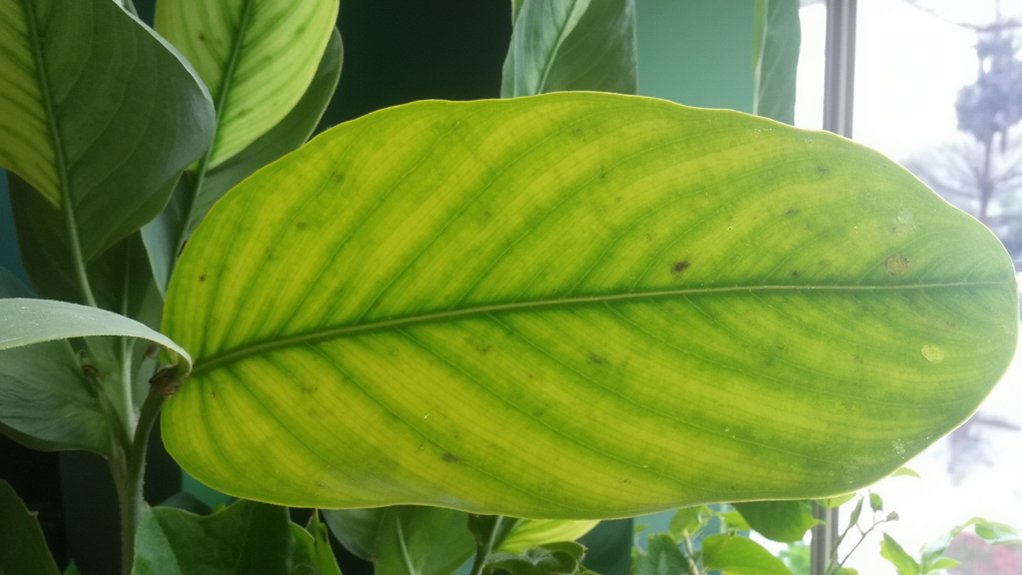
Although it might seem counterintuitive, yellowing leaves are often a telltale sign that you’re overwatering your plants. You might think they need more water, but hold off. Too much moisture drowns the roots, blocking oxygen and causing leaves to turn yellow, starting usually at the tips.
Check your plant’s leaves closely for this symptom. If you spot yellow patches spreading over days, say 3 to 5, it’s a clue. Don’t just guess; observe the pattern and timing to confirm the issue.
Now, ease up on watering for a bit. Wait until the top 1-2 inches of soil feel dry before you water again. This simple step can help reverse the damage, so keep a close eye on those leaves for improvement.
Soggy Soil
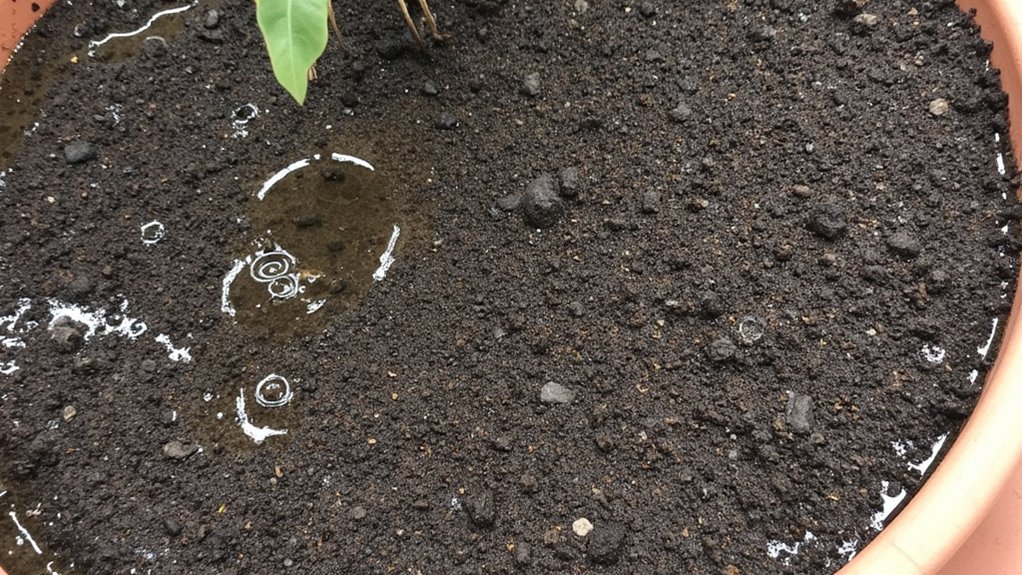
Hey there, let’s talk about soggy soil, a major red flag for overwatering. If your plant’s soil feels like a wet sponge, you’re likely giving it too much water. Check by sticking your finger about 2 inches deep; if it’s consistently damp, that’s a problem.
See, plants need air in the soil to thrive, and soggy conditions block that. Don’t just guess—grab a pot and lift it. Feels heavier than usual? That’s excess water weighing it down.
To fix this, cut back on watering for at least 3-5 days. Let the top inch dry out before you add more. Also, make sure your pot has drainage holes, ideally 0.5 inches wide, to prevent buildup. Stick to this, and you’ll avoid waterlogged disasters!
Root Rot
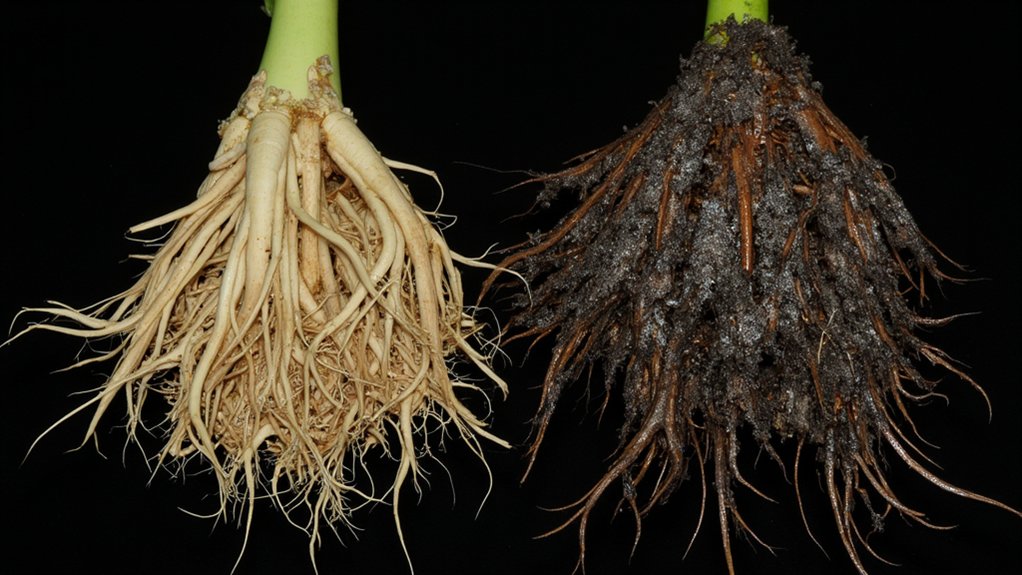
Let’s move from soggy soil to another serious issue: root rot. You’ve gotta watch for this sneaky problem, as it’s often hidden below the surface. Root rot happens when overwatering deprives roots of oxygen, causing them to decay.
Check your plant’s roots if you suspect trouble; gently lift it from the pot. If they’re mushy, dark brown, or black instead of firm and white, you’ve got rot. A foul, swampy smell is another dead giveaway, trust me.
Act fast to save your plant—cut away the rotten roots with clean scissors. Repot in fresh, well-draining soil, and don’t water for at least 3-5 days. Adjust your schedule, maybe every 7-10 days, ensuring the top 1-2 inches of soil dry out first.
Wilting Despite Wetness
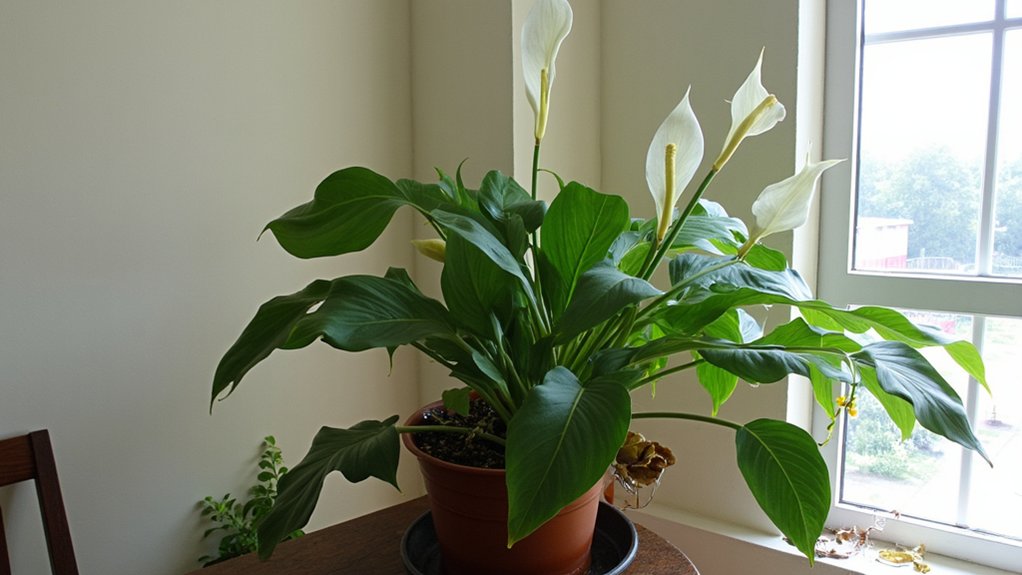
Three sneaky signs can point to overwatering, and wilting despite wetness is a big one. You’d think wet soil means happy plants, right? But if your plant’s leaves droop even when the soil’s soggy, you’re likely drowning it. Overwatering suffocates roots, blocking oxygen they desperately need.
Check the soil with your finger, about 1-2 inches deep. If it’s consistently wet after 3-4 days post-watering, cut back. Don’t water again until the top inch feels dry. This usually takes 5-7 days for most houseplants, depending on light and pot size.
Lift the pot, too; if it’s heavier than expected, water’s pooling. Drain excess from saucers within 30 minutes of watering. Fix this, and you’ll see those leaves perk up soon.
Moldy Plant Surface
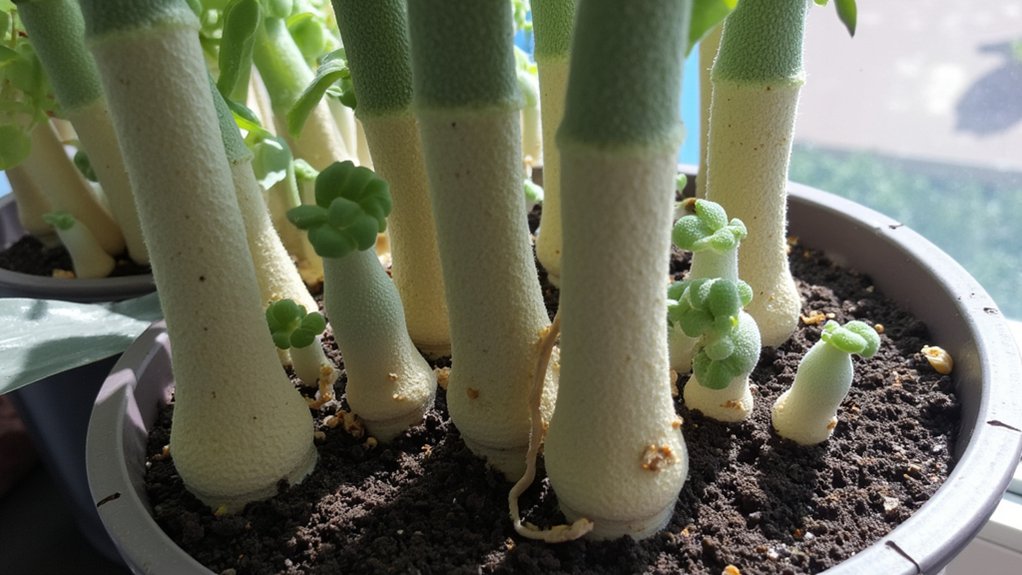
Dive right into checking your plant’s surface, because mold growth is a glaring sign of overwatering. If you spot fuzzy, white, or gray patches on the soil or lower stems, you’ve got a problem. That’s mold thriving in soggy conditions, usually within 3-5 days of excess water.
Scrape off the top 1-2 inches of soil to remove visible mold, then let the pot dry out. Don’t water again until the top inch feels dry to your touch—check daily. Improve air circulation by moving the plant to a breezier spot, ideally near a fan or open window. Mold hates moving air, so this helps.
If it persists after a week, consider repotting with fresh, well-draining soil to save your plant.
Edema Blisters
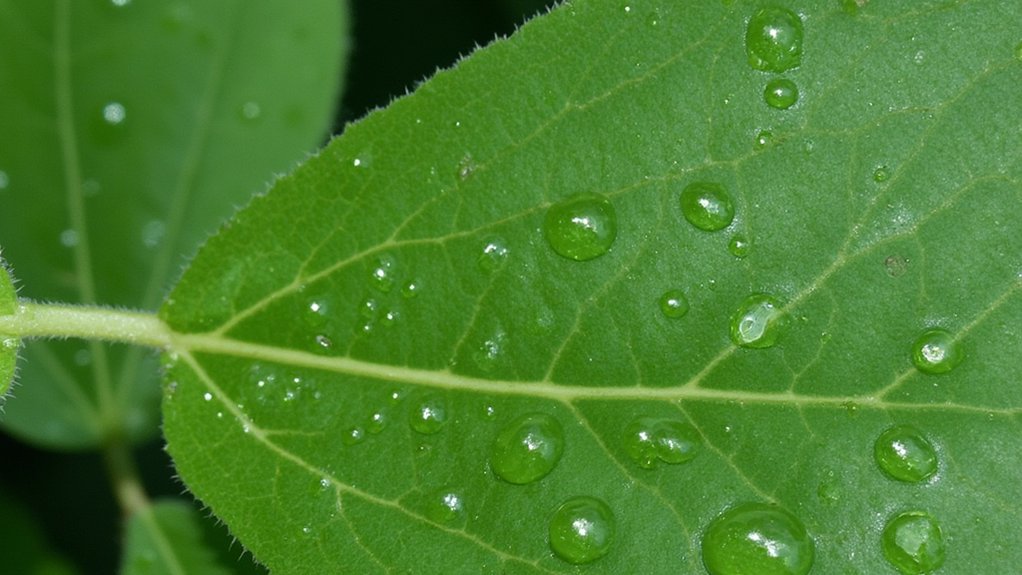
While checking your plants, you might notice odd, watery bumps on the leaves, a clear sign of edema blisters. These small, fluid-filled spots, often 1-3 millimeters wide, form when roots take in too much water. Your plant can’t release it fast enough through transpiration, so pressure builds.
Don’t panic; you’ve got this under control. Inspect the undersides of leaves, where blisters often appear first, looking like tiny, shiny warts. They might pop or turn corky over a few days if ignored. Cut back watering immediately—let the top 2 inches of soil dry out before adding more.
Check drainage too; verify pots have holes, and don’t let trays hold standing water. Fix this, and you’ll see those blisters fade within a week.
Stunted Growth
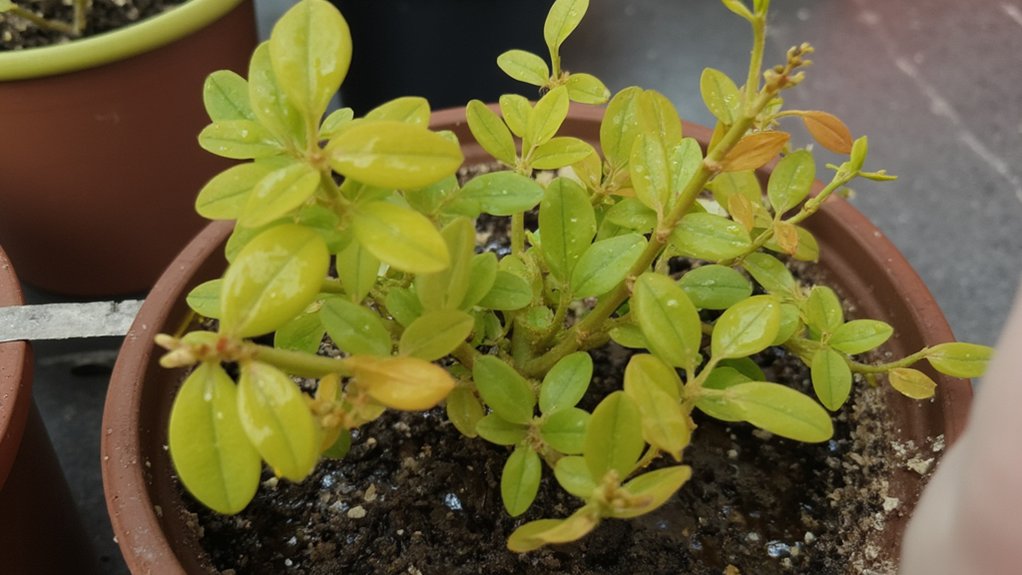
Hey, let’s talk about stunted growth, a sneaky sign your plants might be drowning in too much water. You’ve probably noticed your plant isn’t getting taller, or maybe it’s stuck at a measly few inches. Overwatering cuts off oxygen to the roots, stunting their development big time.
Check your plant’s progress over a 2-week span. If it hasn’t grown even a half-inch, despite good light and nutrients, water’s likely the culprit. Soggy soil suffocates roots, halting growth in its tracks, so don’t ignore this clue.
Here’s what you do: cut back watering to once every 7-10 days, depending on the plant type. Feel the top 2 inches of soil; if it’s dry, water lightly. Stick to this, and you’ll see improvement soon.
Drooping Leaves
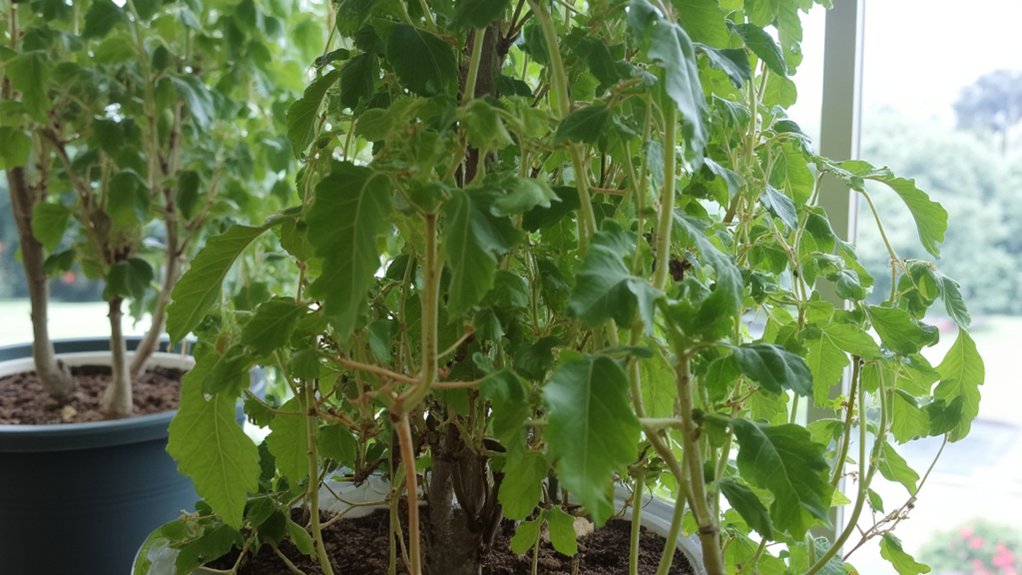
Notice how your plant’s leaves are sagging like they’ve lost all hope? That’s a classic sign you’re overwatering, my friend. When roots sit in soggy soil, they can’t breathe, and leaves droop from lack of oxygen. Check your pot right now—does water pool at the bottom?
Don’t just guess; poke your finger into the soil, about 2 inches deep. If it’s consistently wet after 3 days post-watering, cut back. Let the top inch dry out before you water again, and verify drainage holes aren’t clogged. This simple fix can perk things up in a week.
Keep an eye on those leaves, too. If they’re still drooping after adjusting, inspect the roots for damage. Act fast to save your green buddy!
Fungus Gnats Infestation
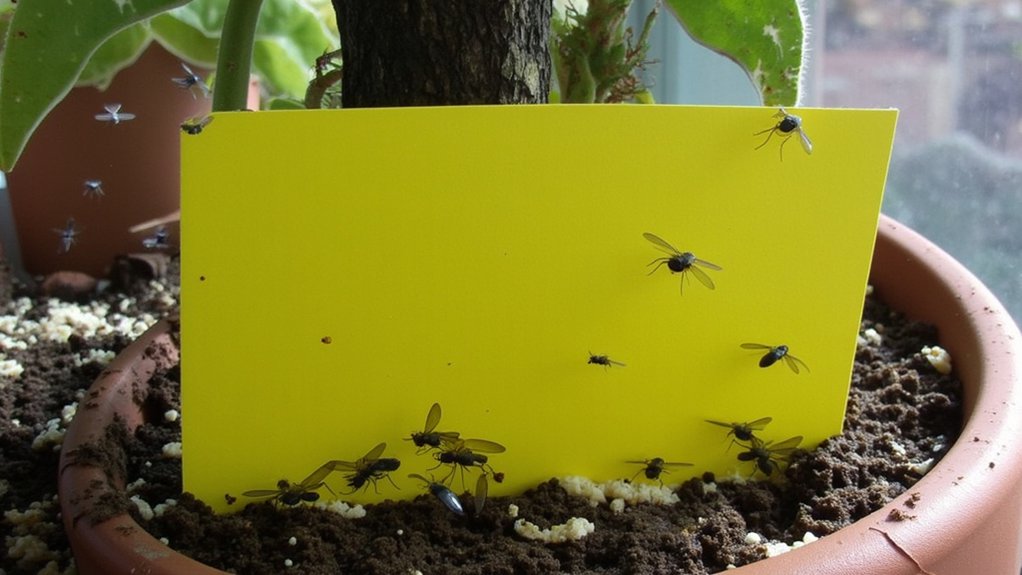
Countless tiny flies buzzing around your plant? If you’re spotting these pesky critters, you’ve likely got a fungus gnats infestation, a clear sign of overwatering. These small, dark flies, about 1/8 inch long, thrive in soggy soil, laying eggs in the top 1-2 inches.
Don’t ignore them; they can harm your plant’s roots. Start by letting the soil dry out completely between waterings, which takes about 5-7 days for most houseplants. Then, set up sticky traps near the pot to catch adults—place two 3×5-inch yellow cards just above the soil.
Still seeing gnats after a week? Sprinkle a 1/4-inch layer of sand over the soil. It’ll block egg-laying spots, helping you regain control fast.
Leaf Tip Burn
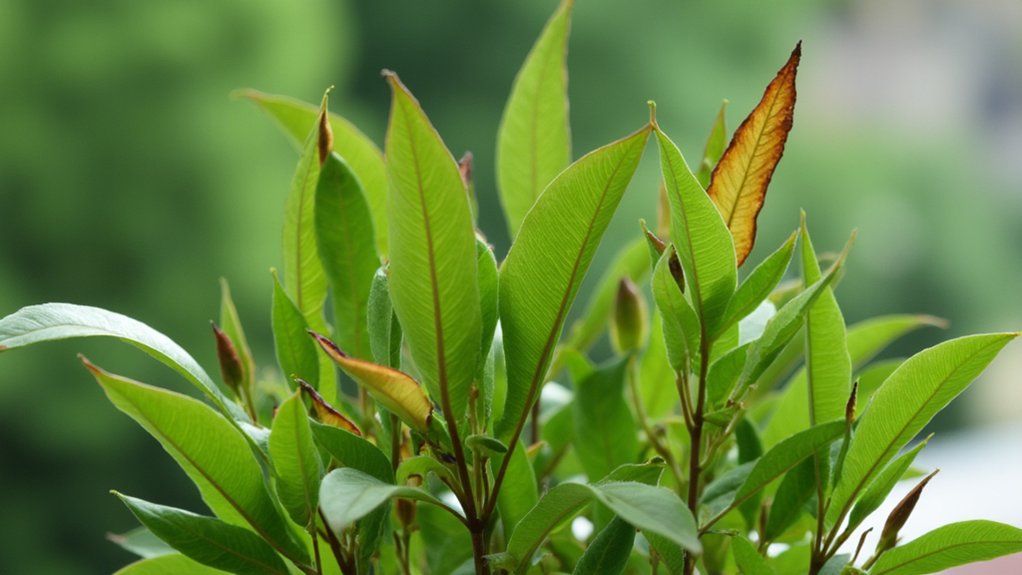
While inspecting your plants, you might spot brown, crispy edges on the leaves, a classic sign of leaf tip burn. This often happens when overwatering messes with nutrient balance, causing salt buildup in the soil. It’s like your plant’s tips are screaming for help, but don’t worry, you’ve got this.
First, check if the soil stays soggy for more than 2-3 days after watering. If it does, cut back—let the top 1-2 inches dry out before adding more water. Also, flush the pot with distilled water, about 2-3 cups, to wash out excess salts.
Monitor your plant over the next 7-10 days for improvement. If tips keep browning, adjust your routine further. You’re learning, and your plant will thank you.
